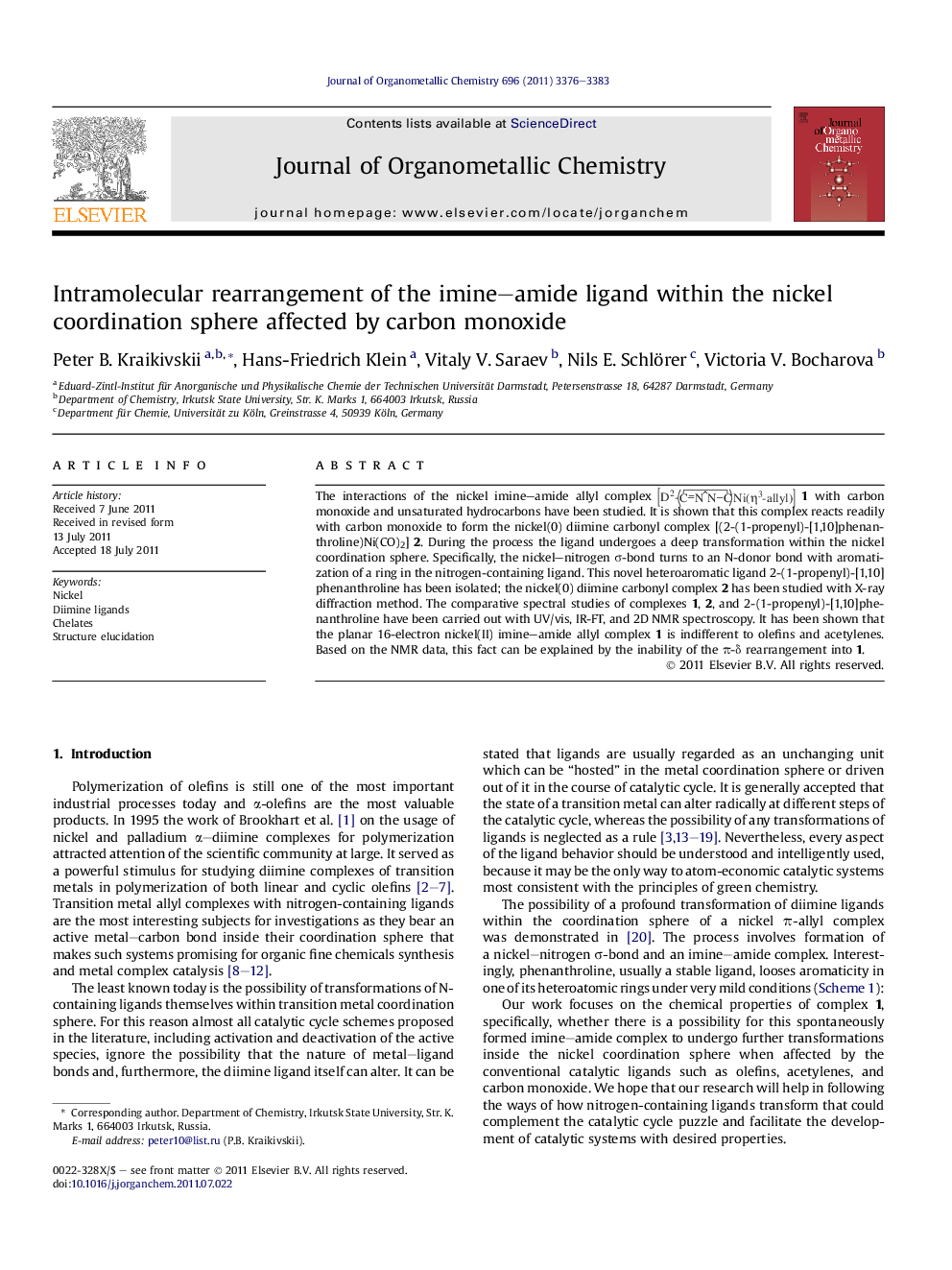| Article ID | Journal | Published Year | Pages | File Type |
|---|---|---|---|---|
| 1323714 | Journal of Organometallic Chemistry | 2011 | 8 Pages |
The interactions of the nickel imine–amide allyl complex 1 with carbon monoxide and unsaturated hydrocarbons have been studied. It is shown that this complex reacts readily with carbon monoxide to form the nickel(0) diimine carbonyl complex [(2-(1-propenyl)-[1,10]phenanthroline)Ni(CO)2] 2. During the process the ligand undergoes a deep transformation within the nickel coordination sphere. Specifically, the nickel–nitrogen σ-bond turns to an N-donor bond with aromatization of a ring in the nitrogen-containing ligand. This novel heteroaromatic ligand 2-(1-propenyl)-[1,10]phenanthroline has been isolated; the nickel(0) diimine carbonyl complex 2 has been studied with X-ray diffraction method. The comparative spectral studies of complexes 1, 2, and 2-(1-propenyl)-[1,10]phenanthroline have been carried out with UV/vis, IR-FT, and 2D NMR spectroscopy. It has been shown that the planar 16-electron nickel(II) imine–amide allyl complex 1 is indifferent to olefins and acetylenes. Based on the NMR data, this fact can be explained by the inability of the π-δ rearrangement into 1.
Graphical abstractThe reaction between the imine–amide allyl complex of nickel(II) and CO is attended by a profound transformation of the imine–amide ligand with the formation of aromatic ring.Figure optionsDownload full-size imageDownload as PowerPoint slideHighlights► The imine–amide allyl complex of Ni(II) is indifferent to olefins and acetylenes. ► The stability of this complex has been explained by the absence of π–σ-equilibrium. ► The allyl complex and CO interact transforming the ligand greatly. ► The imine–amide ligand turns into the diimine one. ► The ligand transformation proceeds with formation of a new aromatic ring.
